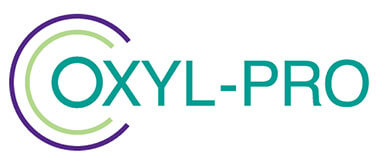Bacteria and food can be a deadly combination, and using a disinfectant for food surfaces should be integral to preventative procedures in food preparation areas.
Indeed, sanitising surfaces is essential for public health because food contamination can have potentially fatal consequences, such as deadly outbreaks of salmonella.
Another example is the Food Standards Agency (FSA) finding there are harmful levels of antimicrobial-resistant bacteria in fresh chicken sold in the UK.
What are the Commonly-used Disinfectants?
There are several types of disinfectant for food surfaces used commonly in the hospitality sector.
Surface-active agents, or surfactants, are versatile detergents with biocidal properties.
They include:
- Amphoterics – based on amyl alkyl glycides
- Cationics – quaternary ammonium compounds (QACs)
- Biguanides and diguanides.
Of these, biguanides and diguanides have low toxicity and irritancy, while the amphoterics and cationics can cause irritation to the skin, eyes and respiratory system.
Alcohols have frequent use as a transport medium for other active ingredients.
These too may cause irritation, and can pose a fire hazard.
The industry also uses peracetic acid as a disinfectant for food surfaces due to its powerful oxidising properties.
Finally, there are hypochlorite and organic chlorine-releasing compounds.
The challenge for the food and drink industry is to find a disinfectant that is powerful enough to act as an effective biocide, but which will not be harmful to humans when applied.
HSE recommends avoiding disinfectants that contain chemicals which are toxic by inhalation or will irritate the skin.
How to Use Disinfectants on Food Preparation Surfaces
To keep food preparation surfaces clean, it is vital to disinfect these surfaces between tasks, especially where you have been handling raw food.
The best way to do this is to clean as you go, clearing up spilt food immediately and applying disinfectant to the relevant area. You should be using products that are suitable for the task and effective in eliminating bacteria.
Implement a cleaning schedule to ensure you clean all equipment and surfaces regularly, and do not let food waste build up.
Use this schedule to identify:
- What you need to clean and disinfect
- How often you need to do this
- How you should do it.
You should also decide what products you are going to use, including their safe storage and dilution.
There is a crucial difference between cleaning and disinfecting.
Cleaning removes residues, dirt, grease and other matter but it does not kill all pathogens.
Disinfecting reduces micro-organisms to levels that will not compromise food safety or suitability.
Therefore, you need a combination of both cleaning and disinfecting to ensure food safety standards.
Cleaning and disinfecting products include:
- Detergents
- Disinfectants, and
- Sanitisers.
What Should You Clean and How?
You should clean all equipment and surfaces involved in food preparation, and apply additional disinfectants where there is direct contact with food.
This includes worktops, chopping boards and knives. You should also maintain a rigorous hand-cleaning regime.
You will need to clean some surfaces and equipment several times a day, or after specific activities. Pay special attention to anything that is involved in the preparation of raw food.
If you wash surfaces using detergent and hot water, you can kill bacteria, but only if the water is hot enough. To do this, you must wash surfaces using water that is above 70°C.
The major disadvantage with this is that at that temperature, water will scald your hands.
You can wash surfaces with warm, soapy water and this physical action may detach bacteria, allowing you to wash them down the drain.
However, to be sure that you have thoroughly disinfected food preparation and other surfaces, the best course of action is to disinfect them.
- Use detergents to first clean surfaces and remove any grease.
- Disinfectants will kill bacteria and viruses, but you should only apply them to surfaces that appear clean to the eye. If the food surface you apply disinfectant to is visibly dirty, the disinfectant will not be effective.
- You can use sanitisers to both clean and disinfect. Your first application will remove dirt and grease, then reapply it to disinfect the cleaned surface.
Any disinfectant you use should meet BS EN 1276 standards.
Oxyl-Pro Clean uses aseptic grade hydrogen peroxide, and is stabilised using only food-safe ingredients. This makes it ideal for sanitising food surfaces.
It is a broad-spectrum disinfectant with proven effectiveness in eliminating and controlling listeria. It has a bacterial efficacy of over 99.999 per cent within one minute contact time.
Oxyl-Pro is effective against salmonella and E-coli and this lasts long after the disinfectant has dried on surfaces.
For more information about Oxyl-Pro and its uses as a disinfectant for food surfaces, please call us on +44 1606 851 782, email [email protected] or fill in our contact form and we will be in touch.

